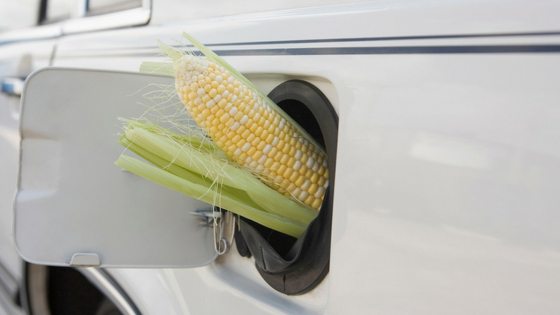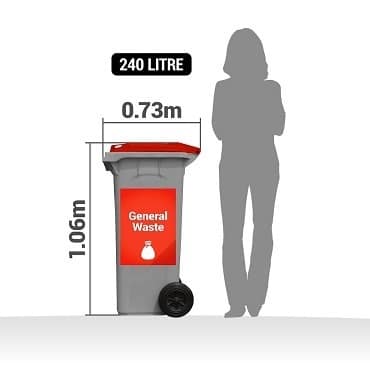Green Waste Removal 🍃 – Green Waste Collections And Bins
Energy Disrupter
Green Waste Removal 🍃: If you have constantly attention to the press recently in Australia, you will know that an ongoing crisis in the recycling and waste management industries looms. Due to China clamping down on importation of low quality recycling commodities, many Australian councils and commercial recyclers have felt the pinch.
Ipswich council has announced that they have put an end to commingled/mixed recycling bin services for residents. In today’s blog, we will cover a welcome bit of good recycling news. Canberra City Council is intending to introduce a green waste removal service for food and organic waste for residents.
>Download Now: Free PDF Business Owners Guide To Commingled Recycling Bin Services
We will cover all of the details below:
How Waster can help you with recycling!
If you operate a small business in Australia, keeping costs down is more important than ever. And recycling is one of the best ways to do this! Waster helps small and medium businesses boost their recycling and keep waste management costs low. You can arrange all your required services from general waste to green waste removal online today.
All our services are performed on flexible 30 day agreements. Click the button below to access our waste portal:
How green waste removal could be the fuel of the future!
The major problem with recycling in Australia is our lack of domestic manufacturing industry means any items recycled would need to be sent abroad to be actually used. That is not the case with food waste and organic waste as organic waste can be used to generate clean electricity! The ABC reports that:
“Canberrans could have kerbside food waste collection in five years’ time, with the ACT Government looking to expand its green bin program.
“The extra service is one of the recommendations of the Government’s long-awaited Waste Feasibility Study that also recommends the development of a waste-to-fuel policy.”
The plan would take 5 years to build the facilities needed. But, it could could divert 40,000 tonnes per annum from landfill as foodwaste is estimated to be 37% of the average household garbage bin.
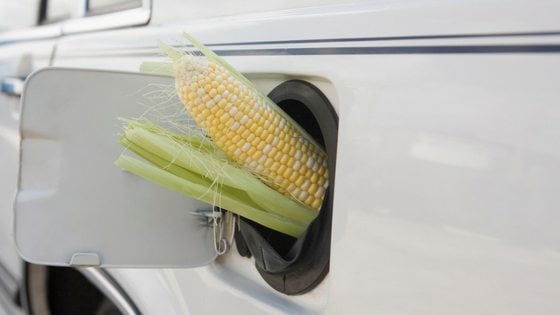

This green waste removal service could see the waste being used for compost or for biogas generation from the decomposition. This gas can then be used to create electricity. Whilst many people have not coddled up to the idea of incinerating waste (as practiced by Sweden), the creation of biogas may become much more beneficial for the environment if people would stop and think about it.
See our blog on waste minimization and tea bags.
Mr Waster’s thoughts
It is good to hear a good news story from the Australian waste and recycling sector. Keeping food and organic waste out of landfill is an excellent endeavour, and will help reduce our dependence on coal and fossil fuels. To see how accessible and easy to use biogas can be, see a device developed for use at your own house or garden.
Green waste removal Melbourne
Waster is committed to the joint goals of helping small and medium businesses in Australia reduce their waste management costs and also to boost recycling performance.
With utilisation of a smart approach to waste management, most businesses can easily achieve these.
With ever increasing levies on dumping waste at landfill, this makes recycling more important than ever. This is particularly true in metro Melbourne, where the levy on dumping a tonne of waste at landfill has increased year on year.
According to the Municipal Association Of Victoria: “The Victorian Government charges a landfill levy on solid waste. Councils pay the levy on municipal waste, with the cost passed through to ratepayers in garbage charges for kerbside collections, gate fees at landfills/transfer stations or rates.” “A sharp increase in state landfill levies was introduced in 2010 to reduce waste going to landfills and councils have been reporting increased illegal dumping as a result. The cost per tonne in 2009-10 was $7 in rural areas and $9 in metropolitan areas, however this has risen progressively to $29.30 in rural areas and $58.50 in metropolitan areas in 2014-15 and continues to rise each year.”
Food waste tend to make heavy bins
If you run a café, restaurant or other business producing or serving food, you may be aware that food waste is extremely heavy. A feature of the Australian waste collection Melbourne industry is that bins are collected by volume (i.e., the size of the bin such as 240 litres up to 4.5 cubic metres – offered through our online waste shop) but they are disposed of at landfill by weight.
Thus the weight of your bins is a major determinant of your costs. For this reason, organic waste tends to be heavier and hence more expensive than what we call dry general waste (i.e., waste from offices, retail businesses etc.)
Cheap green waste removal Melbourne is harder and harder to find. Waster is an innovative waste management business offering low cost and high quality waste and recycling services in all major Australian metro regions including Melbourne, Geelong, Sydney, Brisbane, Perth, Adelaide, Canberra and Darwin.
In our online waste shop, businesses that produce food and organic waste are priced more expensively that offices and warehouses, where the waste bins are generally lighter. We covered methods for businesses to reduce food and organic waste entering your bins by exploring opportunities for charity donations etc. in our blog on organic waste solutions.
Introduction of an organic waste collection can be the best solution to numerous issues.
Cheap green waste removal Melbourne: services available through Waster
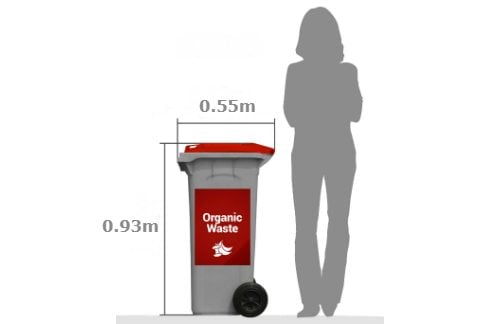
Waster offers green waste removal Melbourne services across Melbourne metro in 120 litre bin sizes.
Benefits of implementing a green waste removal Melbourne service include:
- Increase in diversion / recycling: you can significantly boost your recycling/diversion from landfill by sending food and organic waste to processing such as composting or energy generation plants. Across Australia, there are a growing number of facilities built to process organic waste such as SITA Organics and Earthpower.
One of the biggest changes to the future of green waste rubbish removal Melbourne will be the increasing trend to create sustainable biogas from the decaying (rotting) organic waste.
The very reason that the organic waste smells (and it can smell terrible) is what could make it a valuable resource in the future. We have even suggested that the value of the organic waste (and the potential to create biogas and hence electricity from it) could even lead to free green waste removal Melbourne in future years.
We even suggested that you may be able to sell your organic waste! Obviously, this is still a long way, even in 2022.
- Reduction in cost: By removing food waste from your general waste bins, you can significantly reduce the weight of your bins and hence the cost per collection. Contact us to receive a calculation as to how much your costs would reduce on implementation of an organic waste service. Bins can also be picked up less frequently when they do not contain organic waste (i.e. due to greatly reduced small, hygiene issues etc).
- Improves safety: Lighter bins due to removal of food waste are lighter and easier to move around. This can significantly reduce accidents and injuries such as push / pull injuries from moving bins. Check out our recent blog on protecting your business with sensible document disposal practices. Also see blog on food waste Australia.
At Waster, we are always trying to boost recycling for our customers and have green waste disposal or at least waste disposal as kind for the environment as possible. In recent years, landfills have got a very bad press. They are seen as the worst possible outcome for waste disposal – of course, not counting illegal dumping.
With the current crisis in the Australian (and international) recycling markets caused by the increased Chinese regulations – we are looking at new and old options for green waste disposal. In recent blogs we have covered using plastic waste to build roads – and also the option of waste incineration to produce electricity.
Green waste disposal: how did we cope without modern landfills?
The history of waste management can sometimes me more interesting than you expect, as we saw with early wheelie bins in the Roman era. I was surprised to discover that landfills are a pretty modern idea, and were originally thought to be the height of clean technology.
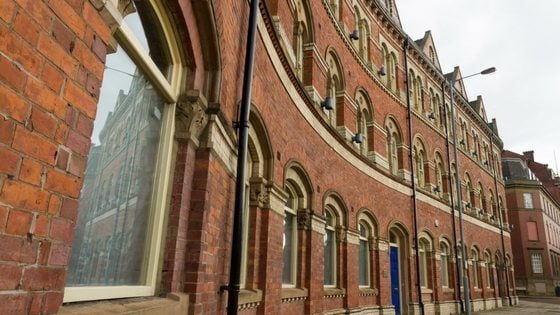

At the beginning, in Victorian Britain, landfills were seen as a great way to fill disused quarries or unsightly holes in the ground. Mike Webster of the environmental charity, Wastewatch says: “Historically, municipal landfills were seen as a step forward; a form of landscape remediation whereby you have a hole in the ground created by from open cast mining or quarrying, you fill it up and you can build on it. Besides, before that people had been dumping their waste outside their houses, in streams, in rivers.”
At this time, resources were very scarce and hence valuable, and people made the most of what they had. Dr Timothy Cooper from Exeter University writes that:“For the first three-quarters of the 19th century, the recycling of waste products had been a fairly common activity. In many urban areas this discarded domestic refuse was collected by scavengers and dustmen and taken to dust-yards of the kind that inspired Dickens’s novel Our Mutual Friend.
Their staff, usually women, were paid to rummage through the filth in search of reusable items such as brass, rags and waste paper.” “And the bulk of everyday household waste not hurled into the nearest river or alleyway for scavenger recycling, was burnt in domestic grates – the vast quantities of ashes from which were also valuable to the appropriately named dustmen and women, as a core ingredient of bricks and as fertiliser – meaning that this, too, could be sold on.”
It was only towards the end of the 19th century when people began to understand germs but also started to fear unfounded concepts such as miasma from burning decaying matter that landfills and council waste collection really took off.
Britain pioneered the development of landfills and they were seen as great additions to enable holes in the ground to be filled and reused for parkland or similar. The word “landfill” however was not used until after the second world war. The post war period also saw a move to landfills as people became aware of the dangers of burning large amounts of waste near urban areas for respiratory illnesses and others.
As the throw away and consumer cultures grew, landfills became completely accepted by the mid 1970s.
What Mr Waster thinks about green waste removal and disposal
As like many things we once thought were great – the side effects of landfills and the throw-away culture means that landfills can not be seen now as green waste disposal. They will always have a place in a green waste disposal strategy alongside recycling, incineration etc. The ability to create electricity at modern landfills from the greenhouse gases emitted is also a positive.
See a video below from an early rubbish tip in the UK that is c.100 years old.
[embedded content]
Green Waste Collection
It’s a very pleasant morning. The birds are chirping and the sun is shining bright.
You go out and look at your garden, sipping your coffee while you’re at it. Then, you look at your garden and see branches, flowers, leaves, and grass clippings all over your garden. You then ask yourself “How do I maintain my garden?” Well, if you are a residential household – you are probably supplied with a council green waste collection service. They are considered as green waste.
Green waste has been making headlines as something that can be used to save the environment or at least not go to landfill. Before I get further with the topic, let me first define what green waste is. Green waste – or garden waste – is biodegradable and composting waste usually coming from garden refuse or kitchen waste that can be drawn away from landfills for recycling.
What can go in my green waste collection bin?
Green waste usually has a green lid signage in Australia, though it can vary from across territories. Waste such as grass clippings, leaves, twigs, weeds, and flowers are applicable to be put in green waste bins. Take note that dried leaves, pine straws, and hay are called brown waste. They are rich in carbon, unlike green waste which is rich in nitrogen (we covered how coffee grounds can help in this regard in a previous blog).
What can’t go in my green waste bin?
Generally, anything in-organic cannot go in green waste bins (think plastic, metal etc.). Though, some organic items also cannot go in green waste bins. These include materials such as large wood and branches, soil, rubble, concrete, combustible, animal waste, and flower pots. Reasons for these vary. If any of these items are found in your green waste bins, the collectors can opt not to take your bin and your waste for disposal.
Green waste removal: the process
Like any other waste management processes, there is a specific way on how to handle the green or garden waste through the council green waste collection service. They are collected by either the local councils or private businesses that engage in green waste collection and recycling.
After being sent to the facilities for processing, they are first decontaminated. They remove the unnecessary contaminants they may contain like steel, plastic, glass, bricks, or other general waste. The workers there manually remove the irrelevant stuff.


Then, the shredding starts. The organic materials are turned into smaller portions and stacked in windrows. Throughout the 16-20 weeks, they are kept in an environment full of moisture and turned regularly. The live organisms then break down the material being recycled. Heat is generated, therefore destroying the excess weeds and pathogen that encompasses it. The temperature ranges between 50-70 degrees Celsius. Laboratories check and ensure that the compost complies with standards.
The compost is then screened into required sizes. After the processing, the finished compost is now ready to hit the market! Green Waste Removal: Benefits of Recycling Green Waste To The Environment There are many benefits to recycling green waste, especially to the environment – that can be listed down. Here are the following benefits:
- It creates high-quality compost
- It reduces the disposal of landfill
- It reduces greenhouse gases
- It reduces the pungent odour emitted by irresponsible waste disposal
Another benefit of recycling green waste brings is when it is already turned into compost, it greatly benefits the soil. This includes your ordinary garden and farms, as well! This is of course vital in a country like Australia – where we have long dry spells.
Here we have the benefits of the green waste collection-turned-compost:
- It improves the quality of soil for plants to grow in
- It upgrades crop yields
- It supports live organisms in the soil which helps the plants grow
- It makes the plants stronger
- It reduces the use of pesticides and synthetic fertilisers.
Did you know that there are other ways on how to utilise green waste? It can also be turned into renewable energy. Called biogas, it is an alternative to fossil fuel gases. Due to it being organic, it can be used to curb greenhouse gases.
Green waste removal: importance of responsible waste management
With proper waste management, it can benefit both the environment and the people. Please avoid irresponsible waste management that can bring harm to the environment instead of helping it. Did you know that when you irresponsibly dispose of green waste -say for example, – let it be put in landfills, it has a tendency to harm the environment?
That is because when you dispose of green – or organic waste into landfills, they undergo anaerobic decomposition (due to lack of oxygen) and generates methane, as a result. Methane is regarded as one of the most damaging greenhouse gases. When it leaks into the air, it becomes a greenhouse gas that is 25 per cent more potent than carbon. As it is a greenhouse gas, it absorbs heat. The more greenhouse gas there is, more heat is trapped in the atmosphere – therefore making the greenhouse effect worse on Earth.
With all of these being said, it is our responsibilities as the stewards of the world to ensure proper waste management to avoid – or at least reduce – the greenhouse effect. To know more about responsible waste management and why it is so important to practise, read our blog here on reliable waste management.
Availability of green waste in businesses and household
Unlike households that usually have a garden outside, it is difficult to collect green waste from business facilities who produce little to no amount of green waste at all. Residents usually produce more green waste compared to businesses. They can also put their kitchen waste like the aforementioned items in green waste bins. In most areas, it is not usually commercially viable to provide a green waste collection service for businesses to drive long distances between florists etc.
Speak to Waster about the bin options available to you and your business
Look no further as Waster is here to help with your waste management needs! After reading this, you might be wondering “Which waste management service should I avail?”
Choose Waster: waste management for smart businesses! Also, check out our organic waste services here which is great for food and organic waste.


